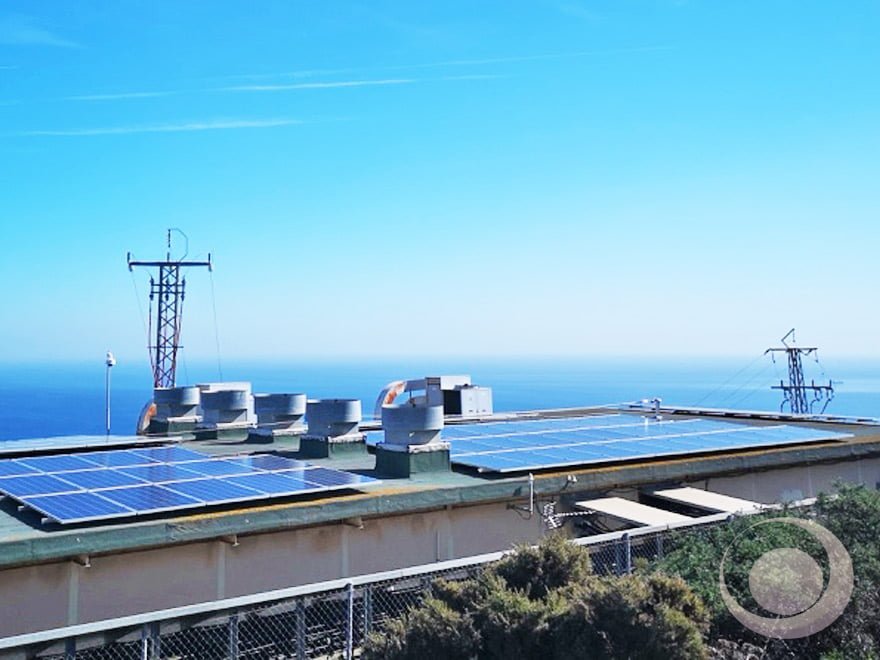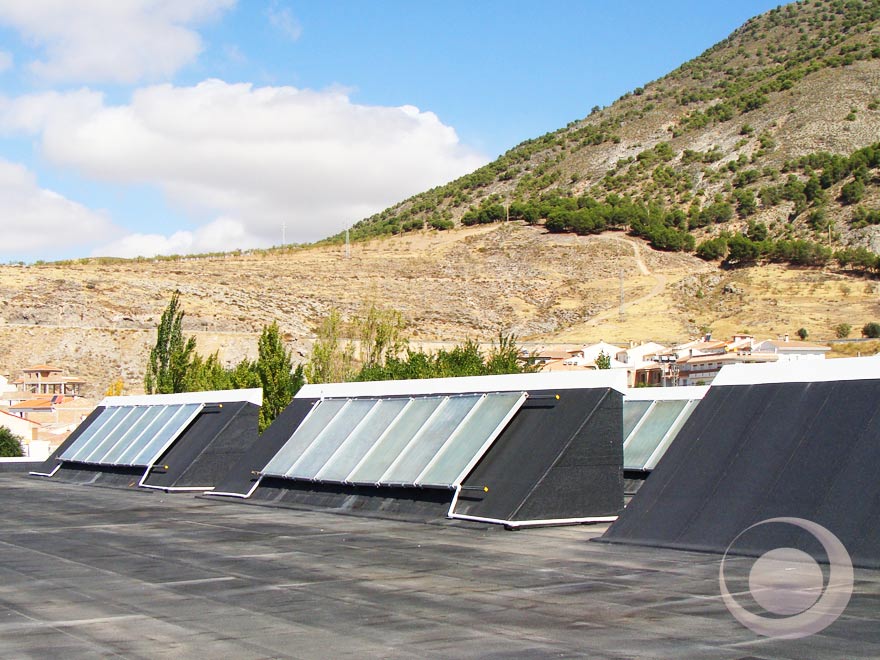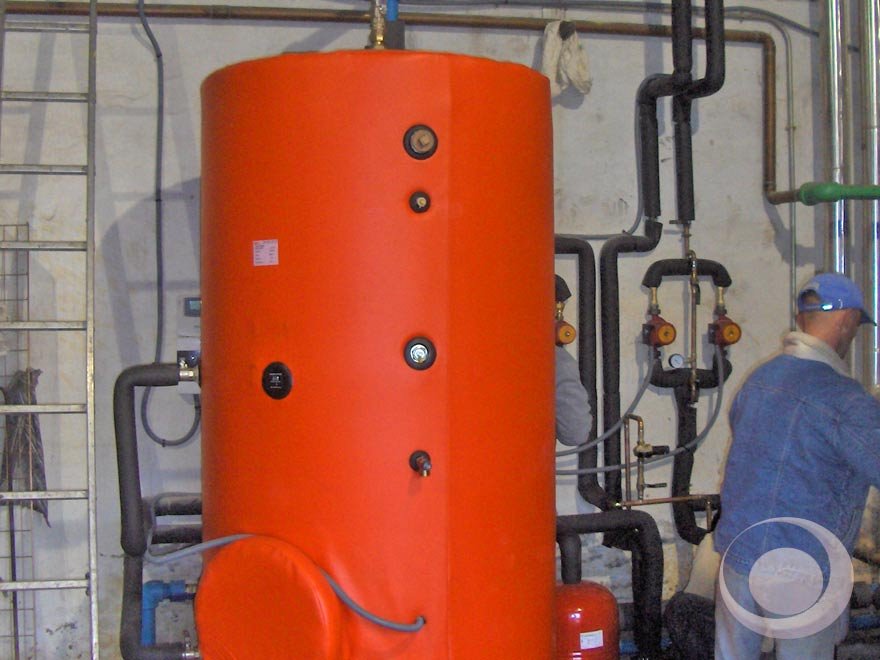Thermodynamic solar energy, or more commonly known as free thermodynamic energy, is normally used to generate domestic hot water (DHW), heating or air conditioning of swimming pools.
A system of this type is basically composed of three elements:
Heat pump: A refrigerant gas compressor and an expansion system are the key elements of the heat pump. This element, as is obvious, consumes electrical energy.
Thermodynamic solar panels: They are the gas evaporator of our heat pump, in them the refrigerant will change from liquid to gaseous state. We can say that it would be equivalent to the exchange made by the outdoor unit with the air in a commercial heat pump equipment.
Accumulator: It has an internal coil where the gas coming from the heat pump is condensed.
Let’s explain a little better how it works, taking a DHW system as an example:
In the thermodynamic plate the cooling liquid coming from the heat pump is introduced, turning it into a very cold surface. When the sun shines on it (that is why it is black), it will easily absorb energy or even simply take it from the ambient air, rain, wind, etc. In the evaporation of the liquid, the resulting gas, which is very hot, returns back to the heat pump and is introduced into the accumulator, which has a coil that will heat the water and condense the refrigerant gas back to a liquid state. The liquid is sent back to the heat pump to start the cycle again.
In INOVE ECOENERGÍA, S.L. we have a wide experience, and our professionalism is a guarantee in this sector:

Equipment and systems capable of producing energy 24 hours a day, even in rainy, sunless and windy conditions. They are the ideal choice for locations where the sun is not present for many hours of the day or a large amount of energy is needed with minimum consumption.

Solar equipment and systems for the production of domestic hot water (DHW) for private homes, hotels, public centers (gyms, schools, etc.).


